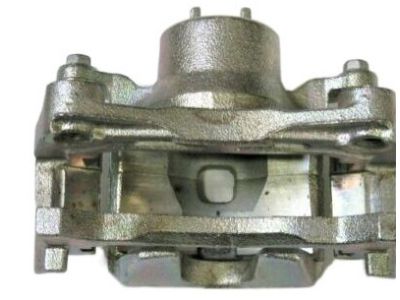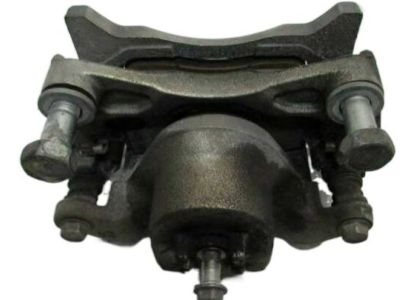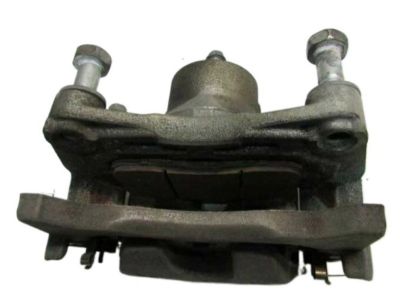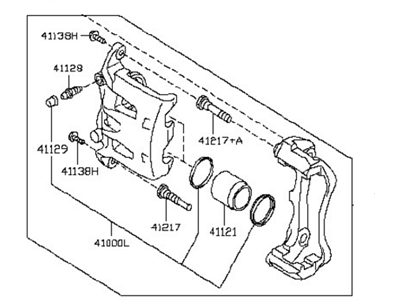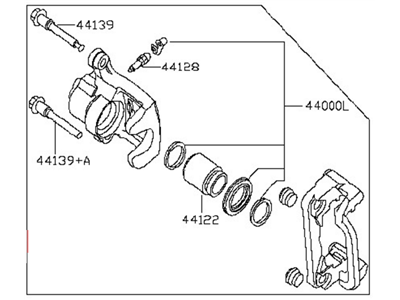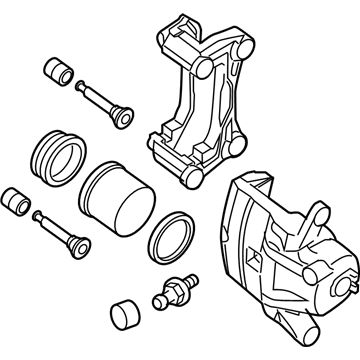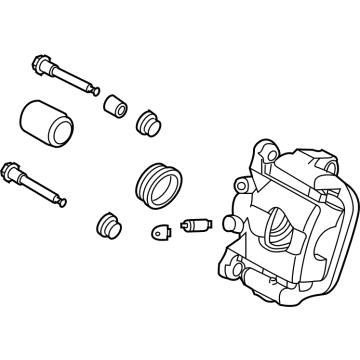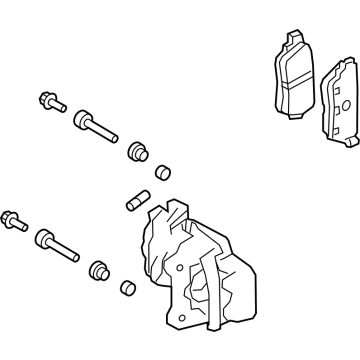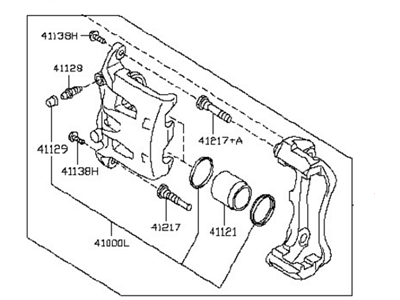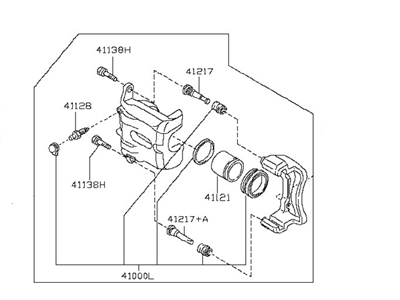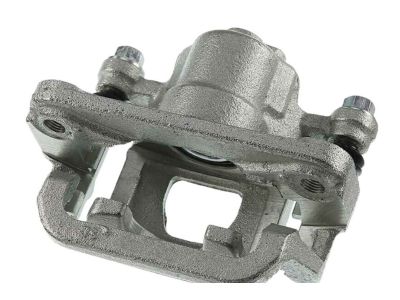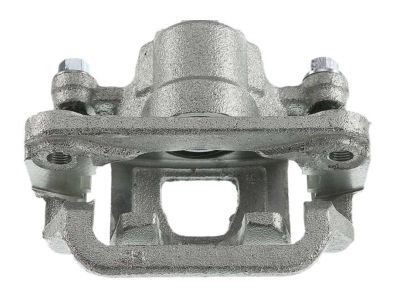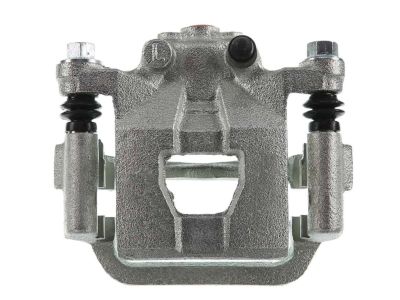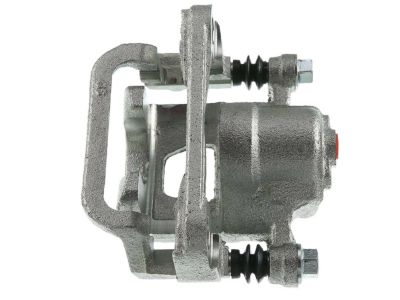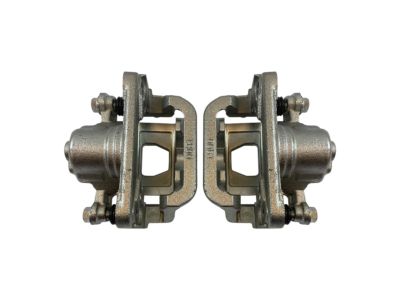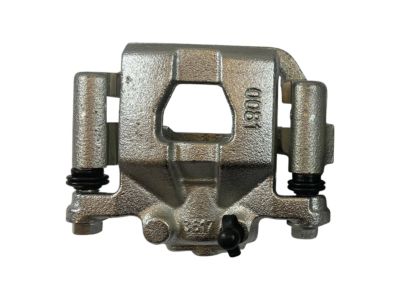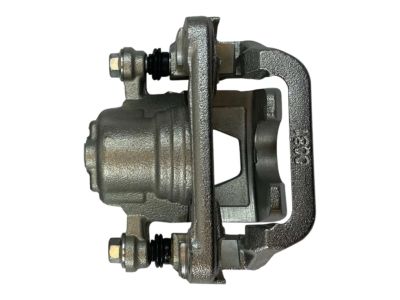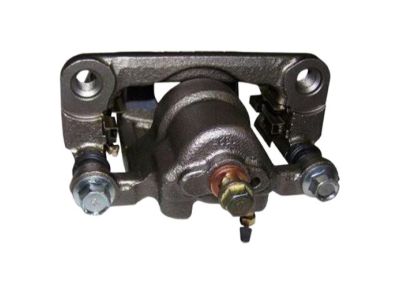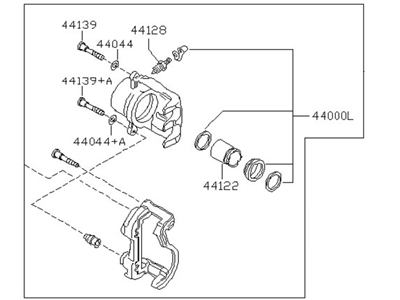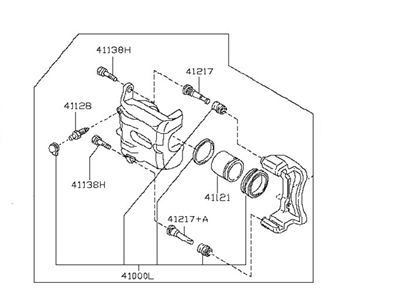×
- Hello
- Login or Register
- Quick Links
- Live Chat
- Track Order
- Parts Availability
- RMA
- Help Center
- Contact Us
- Shop for
- Nissan Parts
- Nissan Accessories

My Garage
My Account
Cart
Genuine Nissan Altima Brake Caliper
Caliper- Select Vehicle by Model
- Select Vehicle by VIN
Select Vehicle by Model
orMake
Model
Year
Select Vehicle by VIN
For the most accurate results, select vehicle by your VIN (Vehicle Identification Number).
41 Brake Calipers found

Nissan Altima CALIPER Assembly-Front RH, W/O Pads Or SHIMS
Part Number: 41001-3TA0C$361.08 MSRP: $538.78You Save: $177.70 (33%)Ships in 1-3 Business DaysNissan Altima Caliper Assy-Rear LH,W/O Pad & Shim
Part Number: 44011-6CA0D$225.53 MSRP: $331.77You Save: $106.24 (33%)Ships in 1-3 Business DaysNissan Altima Caliper Assy-Rear RH,W/O Pad & Shim
Part Number: 44001-6CA0D$225.53 MSRP: $331.77You Save: $106.24 (33%)Ships in 1-3 Business DaysNissan Altima CALIPER Assembly-Rear RH,W/O Pads Or SHIMS
Part Number: 44001-JA01B$225.53 MSRP: $331.77You Save: $106.24 (33%)Ships in 1-3 Business DaysNissan Altima CALIPER Assembly-Rear LH,W/O Pads Or SHIMS
Part Number: 44011-JA01A$283.51 MSRP: $430.45You Save: $146.94 (35%)Ships in 1-2 Business DaysNissan Altima CALIPER ASSY-FRONT LH,W/O PAD & SHIM
Part Number: 41011-3TA0D$361.08 MSRP: $548.85You Save: $187.77 (35%)Ships in 1-3 Business DaysNissan Altima BRAKE ASSY-DISC, RR LH
Part Number: D4010-6CA3B$441.09 MSRP: $620.93You Save: $179.84 (29%)Nissan Altima BRAKE ASSY-DISC, RR RH
Part Number: D4000-6CA3C$408.31 MSRP: $620.93You Save: $212.62 (35%)Nissan Altima CALIPER Assembly-Front LH, W/O Pads Or SHIMS
Part Number: 41011-3TA0C$361.08 MSRP: $548.85You Save: $187.77 (35%)Ships in 1-3 Business DaysNissan Altima BRAKE ASSY-DISC, RR RH
Part Number: D4000-6CA3B$439.82 MSRP: $619.13You Save: $179.31 (29%)Nissan Altima Brake-Rear LH
Part Number: 44011-JA01B$225.53 MSRP: $331.77You Save: $106.24 (33%)Ships in 1-3 Business DaysNissan Altima CALIPER Assembly-Rear RH,W/O Pads Or SHIMS
Part Number: 44001-JA01A$283.51 MSRP: $430.45You Save: $146.94 (35%)Ships in 1-3 Business DaysNissan Altima CALIPER Assembly-Front RH,W/O Pads Or SHIMS
Part Number: 41001-8J000$269.32 MSRP: $378.32You Save: $109.00 (29%)Nissan Altima CALIPER Assembly-Front RH,W/O Pads Or SHIMS
Part Number: 41001-3TA0A$361.08 MSRP: $538.78You Save: $177.70 (33%)Ships in 1-3 Business DaysNissan Altima CALIPER Assembly-Front LH,W/O Pads Or SHIMS
Part Number: 41011-3TA0A$361.08 MSRP: $548.85You Save: $187.77 (35%)Ships in 1-3 Business Days


| Page 1 of 3 |Next >
1-20 of 41 Results
Nissan Altima Brake Caliper
If you need any OEM Nissan Altima Brake Caliper, feel free to choose them out of our huge selection of genuine Nissan Altima Brake Caliper. All our parts are offered at unbeatable prices and are supported by the manufacturer's warranty. In addition, we offer quick shipping to have your parts delivered to your door step in a matter of days.
Nissan Altima Brake Caliper Parts Questions & Experts Answers
- Q: What are the recommended steps for replacing calipers due to fluid leakage on Nissan Altima?A:If replacement is integrated, which is usually the case when the calipers exhibit fluid leakage, then replacement is advised over overhaul. New and factory rebuilt units are exchange only so this job is very simple. Calipers should always be replaced in pairs because never is an appropriate time to change just one of the two. First, they ought to unscrew the front or rear wheel lug nuts, lift the car, and put it on jackstands, placing an obstacle under the opposite wheel before removing the front or rear wheel. After that unscrew the banjo bolt, separate the brake hose from the caliper and dispose the sealing washers, as with the new ones that are recommended to be used. This opens up the brake hose to prevent undesirable materials from getting into the system while preventing brake fluid wastage as well. Next, to do that, undo the caliper mounting bolts and then take off the calipers from their bracket. For installation, the process follows the reverse of the above mentioned removal procedures, and is concluded by tightening the caliper mounting bolts to the recommended torque, and the wheel lug nuts as well. There is a banjo bolt on the brake hose end to connect it to the caliper; make sure you replace the sealing washers. Last but not the least, master cylinder to bleed the brake system and check for any leakage around the hose connections and the brakes must be tested thoroughly before moving the car back to its normal use.
Related Nissan Altima Parts
Browse by Year
2024 Brake Caliper 2023 Brake Caliper 2022 Brake Caliper 2021 Brake Caliper 2020 Brake Caliper 2019 Brake Caliper 2018 Brake Caliper 2017 Brake Caliper 2016 Brake Caliper 2015 Brake Caliper 2014 Brake Caliper 2013 Brake Caliper 2012 Brake Caliper 2011 Brake Caliper 2010 Brake Caliper 2009 Brake Caliper 2008 Brake Caliper 2007 Brake Caliper 2006 Brake Caliper 2005 Brake Caliper 2004 Brake Caliper 2003 Brake Caliper 2002 Brake Caliper 2001 Brake Caliper 2000 Brake Caliper 1999 Brake Caliper 1998 Brake Caliper 1997 Brake Caliper 1996 Brake Caliper 1995 Brake Caliper 1994 Brake Caliper 1993 Brake Caliper
